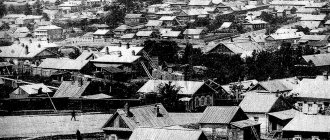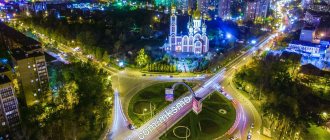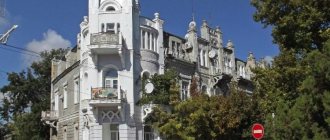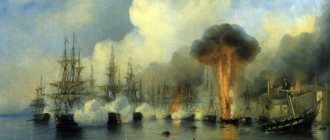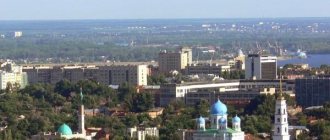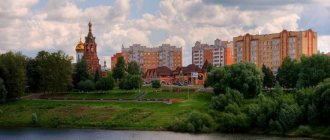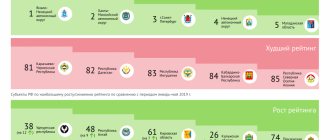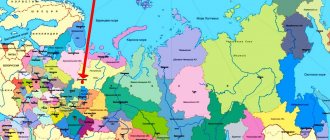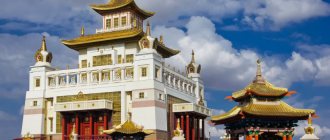Calendar for 2022
| January | ||||||
| Mon | W | Wed | Thu | Fri | Sat | Sun |
| February | ||||||
| Mon | W | Wed | Thu | Fri | Sat | Sun |
| March | ||||||
| Mon | W | Wed | Thu | Fri | Sat | Sun |
| April | ||||||
| Mon | W | Wed | Thu | Fri | Sat | Sun |
| May | ||||||
| Mon | W | Wed | Thu | Fri | Sat | Sun |
| 1 | ||||||
| 2 | 3 | 4 | 5 | 6 | 7 | 8 |
| 9 | 10 | 11 | 12 | 13 | 14 | 15 |
| 16 | 17 | 18 | 19 | 20 | 21 | 22 |
| 23 | 24 | 25 | 26 | 27 | 28 | 29 |
| 30 | 31 | |||||
| June | ||||||
| Mon | W | Wed | Thu | Fri | Sat | Sun |
| 1 | 2 | 3 | 4 | 5 | ||
| 6 | 7 | 8 | 9 | 10 | 11 | 12 |
| 13 | 14 | 15 | 16 | 17 | 18 | 19 |
| 20 | 21 | 22 | 23 | 24 | 25 | 26 |
| 27 | 28 | 29 | 30 | |||
| July | ||||||
| Mon | W | Wed | Thu | Fri | Sat | Sun |
| 1 | 2 | 3 | ||||
| 4 | 5 | 6 | 7 | 8 | 9 | 10 |
| 11 | 12 | 13 | 14 | 15 | 16 | 17 |
| 18 | 19 | 20 | 21 | 22 | 23 | 24 |
| 25 | 26 | 27 | 28 | 29 | 30 | 31 |
| August | ||||||
| Mon | W | Wed | Thu | Fri | Sat | Sun |
| 1 | 2 | 3 | 4 | 5 | 6 | 7 |
| 8 | 9 | 10 | 11 | 12 | 13 | 14 |
| 15 | 16 | 17 | 18 | 19 | 20 | 21 |
| 22 | 23 | 24 | 25 | 26 | 27 | 28 |
| 29 | 30 | 31 | ||||
| September | ||||||
| Mon | W | Wed | Thu | Fri | Sat | Sun |
| 1 | 2 | 3 | 4 | |||
| 5 | 6 | 7 | 8 | 9 | 10 | 11 |
| 12 | 13 | 14 | 15 | 16 | 17 | 18 |
| 19 | 20 | 21 | 22 | 23 | 24 | 25 |
| 26 | 27 | 28 | 29 | 30 | ||
| October | ||||||
| Mon | W | Wed | Thu | Fri | Sat | Sun |
| 1 | 2 | |||||
| 3 | 4 | 5 | 6 | 7 | 8 | 9 |
| 10 | 11 | 12 | 13 | 14 | 15 | 16 |
| 17 | 18 | 19 | 20 | 21 | 22 | 23 |
| 24 | 25 | 26 | 27 | 28 | 29 | 30 |
| 31 | ||||||
| November | ||||||
| Mon | W | Wed | Thu | Fri | Sat | Sun |
| 1 | 2 | 3 | 4 | 5 | 6 | |
| 7 | 8 | 9 | 10 | 11 | 12 | 13 |
| 14 | 15 | 16 | 17 | 18 | 19 | 20 |
| 21 | 22 | 23 | 24 | 25 | 26 | 27 |
| 28 | 29 | 30 | ||||
| December | ||||||
| Mon | W | Wed | Thu | Fri | Sat | Sun |
| 1 | 2 | 3 | 4 | |||
| 5 | 6 | 7 | 8 | 9 | 10 | 11 |
| 12 | 13 | 14 | 15 | 16 | 17 | 18 |
| 19 | 20 | 21 | 22 | 23 | 24 | 25 |
| 26 | 27 | 28 | 29 | 30 | ||
Designations in the calendar: X - holidays; X—weekends; X - reduced working day by 1 hour;
Composition of the Central Federal District and its capital
The Central Federal District includes 18 subjects of the Russian Federation: seventeen regions and one city of federal subordination - Moscow. The largest metropolis in the country, where, according to official data, more than 12 million people live (about 30% of the total population of the Central Federal District), is the administrative center of the district. This is where the county government is located.
The office of the Presidential Plenipotentiary Representative in the Central Federal District is “registered” in the very center of Moscow (Nikolsky Lane, building 6). The Moscow representative offices of several other districts are located in the same building.
Holiday calendar, dates and events for every day of the year
All state and professional holidays of Russia, including significant World and International holidays, and other equally interesting holidays, dates and events of the year... Holiday calendar for every day; Russian production calendar with holidays.
• What holiday is today and tomorrow, dates and events...
What other cities were the capital of Russia at different times?
According to the Tale of Bygone Years, from 862 to 864 the residence of the founder of Russia and the royal dynasty, Prince Rurik , was the city of Ladoga (now the village of Staraya Ladoga in the Leningrad region).
After the prince founded the city of Veliky Novgorod, the capital of the Old Russian state was moved there in 862.
In 882, the Novgorod prince Oleg captured Kiev, and from 882 to 1243 this ancient city became the capital of Russia. Here, with the adoption of Christianity in Rus', the residence of the Russian Metropolitan was formed.
One of the centers of Rus', fragmented into separate principalities since 1243, was the city of Vladimir-on-Klyazma. Strictly speaking, the Russian state was concentrated on the territory of the Grand Duchy of Vladimir, the center of which until 1432 was the city of Vladimir.
After Dmitry Donskoy defeated Mamai's army in 1380, the Moscow princes secured the right to inherit the Vladimir throne. In 1389, the throne passed to Dmitry’s son, Vasily, who “established the grand-ducal throne” in Moscow, and from 1432 Vladimir ceased to be considered a capital city.
From 1564 to 1581, the capital and residence of Tsar Ivan the Terrible was considered the Alexandrovskaya Sloboda, and during the Polish occupation in 1612, the capital was moved to Yaroslavl for several months, until the people’s militia liberated Moscow.
Church calendar for every day
The church calendar is a time counting system used by the Orthodox Church to determine the sequence of church holidays and fasts in the annual cycle, as well as the corresponding services. Also the name of printed publications of various types, containing (in addition to general calendar functionality) elements of the monthly calendar and other materials of a liturgical and menological nature adapted to a specific year. The Church calendar contains two annual circles of events... Church calendar
What number does the Moscow region have?
In the Russian Constitution, in Article 65, all regions of the country are listed. Traditionally, this sequence was used as the official number of regions, including when choosing automobile codes.
What number does the Moscow region have in the Constitution ? For a long time, the capital was in 77th place, which was fixed in many car license plates registered here. But when Crimea and Sevastopol were included in Article 65, Moscow moved to 78th position , where it remains today. But it was number 77 that remained as one of the capital’s automobile codes; 78 did not appear among them.
And I would like to add one more thing on my own about the question of what region Moscow is. It is too densely populated by people from completely different places . And they come here more often from where they live quite poorly. It is noisy and bustling here, but there is almost everything.
Russian folk calendar for every day
Season: Winter - December, January, February.
Season: Spring - March, April, May.
Time of year: Summer - June, July, August.
Season: Autumn - September, October, November.
Sevastopol
Sevastopol was founded at the end of the 18th century. This city is located on the coast of the Black Sea, so for residents of Russia this place is often a resort, and many even dream of living here.
This place is also interesting because it is on the territory of the city that the main naval base of the Black Sea Fleet of the Russian Federation is located.
It is on the territory of Sevastopol that the main naval base of the Black Sea Fleet of the Russian Federation is located. Photo: Pixabay.ru
A little history
Sevastopol is a city imbued with the spirit of history. As soon as Crimea (then Sevastos) was annexed to Russia, it became the base for ships of the future Black Sea Fleet. In all wars, Sevastopol played a very important role; first of all, it performed strategic and defensive functions. During the Great Patriotic War it was destroyed almost to the ground!
By the way, what there is a lot of in Sevastopol is inner-block courtyards, hills, descents, stairs, ascents - it is because of this that the city looks completely different from each new point.
Sevastopol is famous not only among Russian citizens. For example, one of the central streets of the French city of Paris is called Sevastopol Boulevard.
If you came to this beautiful city just to stay, then you should definitely visit 3 attractions:
- The ancient city of Chersonesus (or rather its remains). By the way, we recommend taking a full guided tour. Then you will definitely be very impressed!
- Monument to sunken ships. This monument clearly reflects many historical pages of the city, revealing Sevastopol as the main naval base.
- Count's pier. It’s just a very picturesque place where not only tourists, but also city residents want to get to.
Good environment, but expensive housing
If we consider this place to live, then the definite advantages of living here include the sea, the sun and the comfort of the city. Wide streets, favorable geographical location for traveling along the entire coast, active efforts to restore roads. It is worth noting that Sevastopol ranks 14th in terms of living standards among all cities of the Russian Federation. Due to its favorable geographical location, this city is perfect for lovers of good environmental conditions.
Due to the fact that the city is a subject of the Russian Federation, a large amount of money is invested in it: this money does not go away just like that - active work is being carried out on the reconstruction of cultural objects, work on the development of new buildings and roads. Every year more and more new parks, embankment designs, beautiful terraces, etc. appear.
Video: Timelab Pro
True, you can’t do without minuses either. Very expensive housing and minimal choice of jobs. High prices for food, comparable to Moscow.
Plenipotentiary representatives of the President
- Central Federal District Igor Shchegolev (since June 26, 2018)[15]
- Vladimir Ustinov (since May 12, 2008)
- Alexander Gutsan (from November 7, 2022)[16]
- Yuri Trutnev (since August 31, 2013)[17]
- Sergey Menyailo (since July 28, 2016)[18]
- Nikolay Tsukanov (from June 26, 2022)[15]
- Igor Komarov (from September 7, 2022)
- Alexander Matovnikov [] (from July 26, 2022)[15]
Comparison
What are the indicators of the territory in comparison with other cities in Russia, Europe and the world? In Russia, the capital clearly ranks first in this parameter. The closest competitor is St. Petersburg, more than half the size.
In Europe, the Russian capital also ranks first in terms of territorial size. London, England, is in second place with an area of 1,580 sq. km.
In the world, its indicators are far from leading. It is not even included in the top ten largest cities by this parameter. Asian countries are completely in the lead here. Let us remind you that the largest area in the world is occupied by Chinese Chunqing (82,300 sq. km), Hangzhou is in second place (65,460), and Turkish Konya is in third place (38,873).
Moscow is the largest city in Russia in terms of population and territorial size. According to the above indicators, it ranks first in Europe. The city is developing very dynamically and the values of these parameters will only increase.
At the same time, our capital is significantly inferior to such giants as Karachi, Chunqing, Shanghai, and Hanzhou both in terms of area and population. But is it worth getting upset about? Excessively large territory and population create great management problems and increase the load on infrastructure. This can lead to a significant decrease in the quality of life of city residents, imbalances in the development of regions of the country, and increased social tension in society.
Story
The status of a “city of federal significance” dates back to the times of the Russian Empire. The predecessors can be considered city administrations - settlements with certain lands that were removed from the provinces due to their special significance or location. A special feature was subordination to one of the ministers - defense, internal affairs, and so on. Changes were made after the February and October revolutions. After the first, the city authorities were transformed, and after the second they were liquidated.
In the 30s of the 20th century, two large cities of the Soviet Union - Moscow and Leningrad - again received a special status - cities of republican significance. During the existence of the USSR, each republic had only one city of republican significance, and in the RSFR there were two or more. By the middle of the century, there were 14 such settlements. In January 1993, the two largest metropolises in Russia received a status that they have retained to this day.
